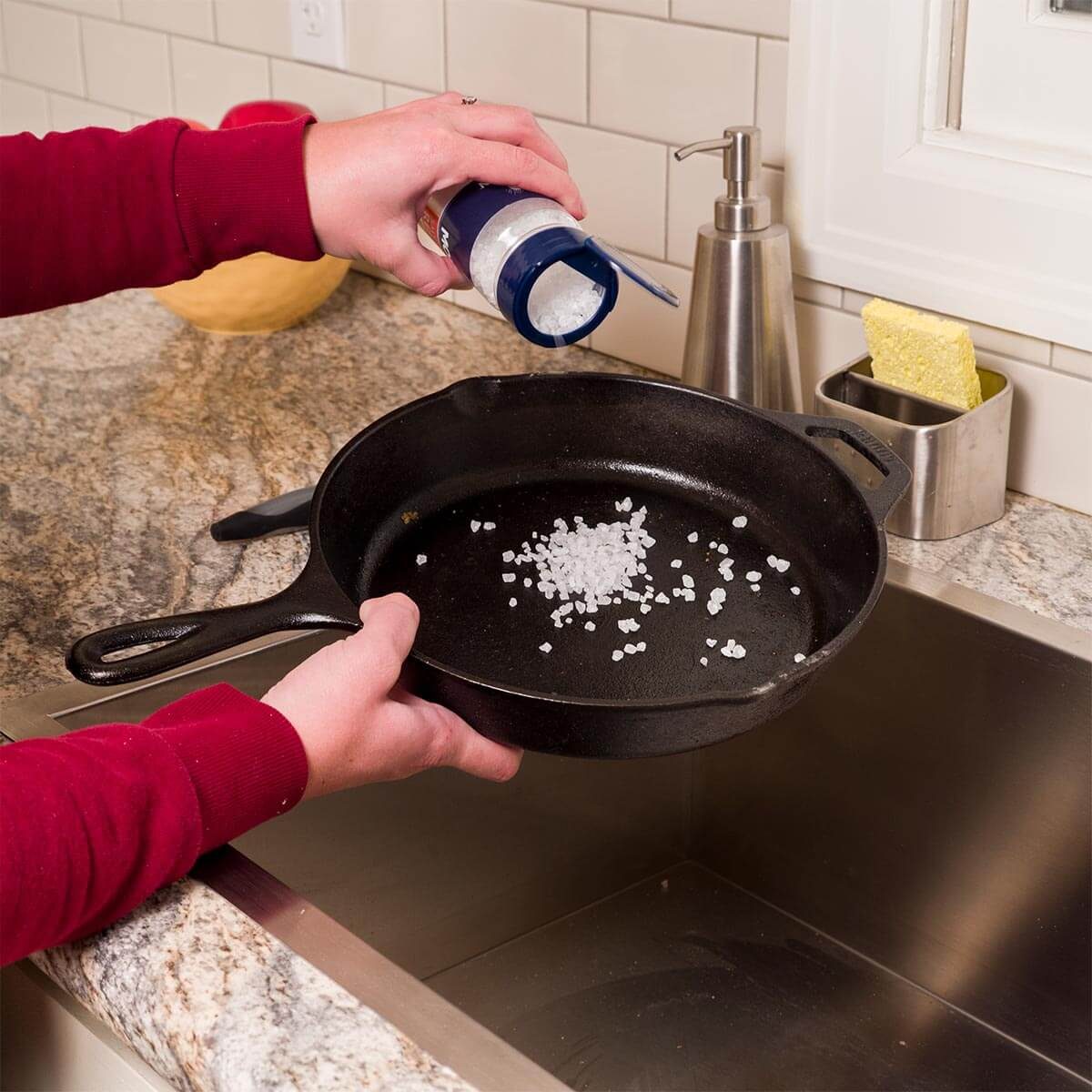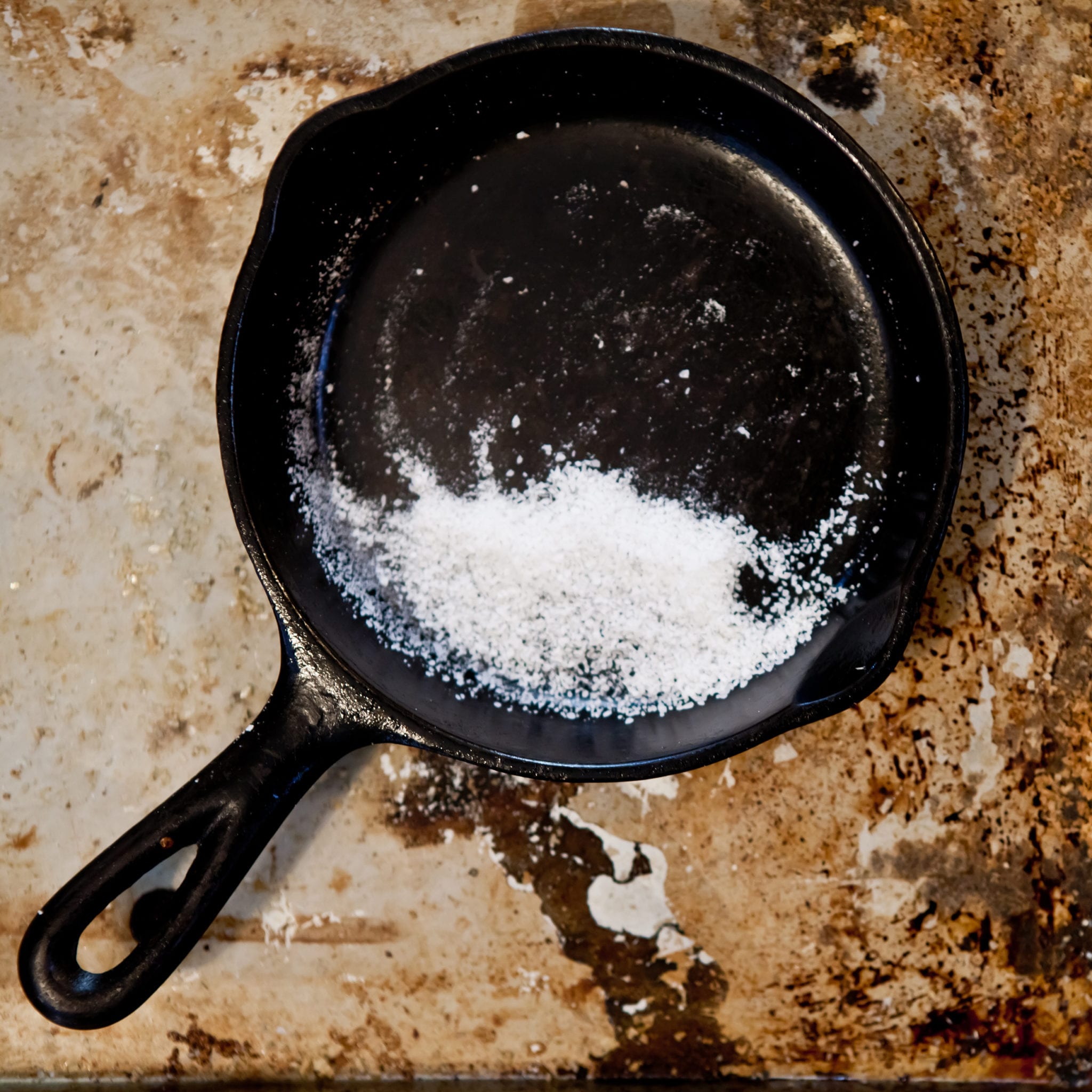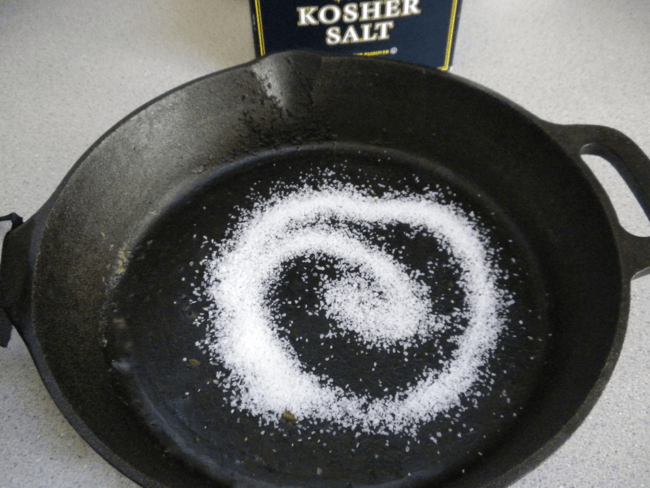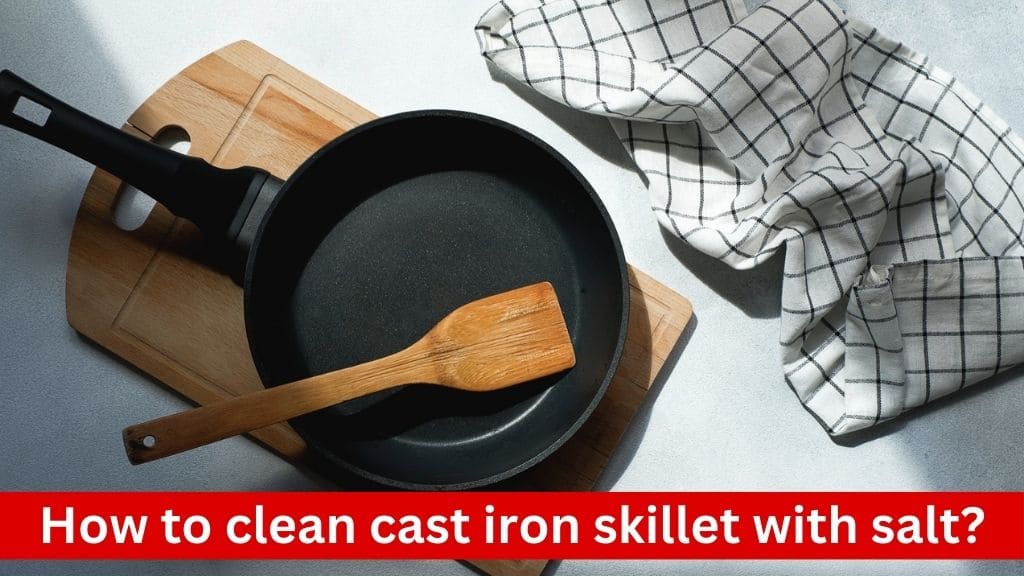Cast iron skillets are prized for their durability, versatility, and ability to retain heat. However, cleaning them can often seem daunting, with concerns about damaging the seasoning or scratching the surface. In reality, a good scrub with the right tools can not only clean your skillet effectively but also enhance its seasoning. One of the most effective and gentle methods for cleaning cast iron is using salt. In this comprehensive guide, we’ll explore the benefits of cleaning with salt and provide step-by-step instructions for achieving a sparkling clean skillet while preserving its seasoning.
Benefits of Cleaning with Salt

Gentle Abrasive Action
Salt acts as a natural abrasive, providing just enough friction to loosen food particles and debris without causing damage to the surface of the skillet. Unlike harsh scrubbing pads or abrasive cleaners, which can strip away the seasoned layer or leave scratches, salt offers a gentle yet effective cleaning solution. The coarse texture of salt particles helps dislodge stubborn residues while preserving the integrity of the seasoned surface.
Preservation of Seasoning
The seasoning on a cast iron skillet is a prized feature that develops over time through the polymerization of oil. This seasoned layer not only imparts flavor to cooked foods but also creates a natural non-stick surface and protects the skillet from rusting. When cleaning with salt, the gentle abrasion removes food residues while leaving the seasoned layer intact. This preservation of seasoning is essential for maintaining the skillet’s non-stick properties and prolonging its lifespan.
Safe and Natural
Using salt for cleaning is a safe and natural alternative to chemical cleaners, which may contain harsh ingredients that can be harmful to both the environment and human health. Salt is non-toxic and environmentally friendly, making it an ideal choice for cleaning cookware that comes into contact with food. Additionally, salt is readily available in most households, making it a convenient and cost-effective cleaning solution.
Versatility
Another benefit of cleaning with salt is its versatility. Salt can be used to clean a variety of cookware, including cast iron skillets, stainless steel pans, and ceramic dishes. Whether you’re removing baked-on residues from a skillet or scrubbing stubborn stains from a baking dish, salt can tackle a range of cleaning challenges with ease. Its abrasive nature makes it effective for tackling tough messes, while its non-toxic properties make it safe for use on food-contact surfaces.
Cost-Effective
Using salt for cleaning is cost-effective, as it eliminates the need for expensive specialty cleaners or abrasive scrubbing pads. A simple mixture of salt and water can effectively clean and deodorize cookware, saving you money on cleaning supplies. Additionally, salt is a pantry staple found in most kitchens, making it readily available whenever you need to tackle a cleaning task. By incorporating salt into your cleaning routine, you can enjoy sparkling clean cookware without breaking the bank.
Preparing Your Cast Iron Skillet

Gather Your Supplies
Before you begin cleaning your cast iron skillet, gather all the necessary supplies to streamline the process and ensure you have everything you need:
- Coarse Kosher Salt: Choose coarse-grained salt, such as kosher salt, for its abrasive texture, which helps in loosening food particles and residues.
- Clean Kitchen Rag or Folded Paper Towel: Use a clean cloth or paper towel to apply the salt scrub and wipe away loosened debris. Avoid using abrasive scrubbing pads or brushes, as they can damage the seasoned surface of the skillet.
- Cast Iron Seasoning Oil: After cleaning, you’ll need to re-season your skillet to maintain its non-stick properties and protect it from rusting. Have your preferred cast iron seasoning oil on hand for this purpose.
By gathering these supplies beforehand, you can streamline the cleaning process and ensure you have everything you need within reach.
Heat the Skillet
Before applying the salt scrub, it’s beneficial to heat the skillet slightly to loosen any stubborn food particles and make them easier to remove. Follow these steps to heat the skillet:
- Place the Skillet on the Stovetop: Position the cast iron skillet on the stovetop over medium-low heat.
- Heat for a Few Minutes: Allow the skillet to heat for a few minutes, until it becomes warm to the touch. This gentle heating process helps soften any stuck-on food residues, making them easier to scrub away during cleaning.
Heating the skillet also serves another purpose—it ensures that the skillet is completely dry before applying the salt scrub. Moisture can lead to rusting, so it’s essential to start with a dry skillet.
Step-by-Step Guide to Cleaning with Salt

1. Apply Salt
- Quantity of Salt: Pour 2 to 3 tablespoons of coarse kosher salt into the skillet. Adjust the amount based on the size of your skillet; smaller skillets may require less salt.
- Type of Salt: It’s crucial to use coarse-grained salt, such as kosher salt, for its abrasive texture. Finer salt may not provide enough traction for effective cleaning.
2. Scrub the Surface
- Use of Rag or Paper Towel: Take a clean kitchen rag or folded paper towel and use it to gently move the salt around the surface of the skillet.
- Application of Pressure: Apply light pressure while scrubbing, focusing on areas with stubborn food residues. The salt will act as a gentle abrasive, loosening food particles without scratching the skillet’s surface.
3. Rinse and Dry
- Rinsing: Once the food particles have been loosened and removed, rinse the skillet with warm water to wash away the salt and any remaining debris.
- Drying: Use a clean rag or paper towel to dry the skillet thoroughly. Ensure that all moisture is removed from the surface to prevent rusting.
4. Season the Skillet
- Heating the Skillet: Place the skillet back on the stovetop and heat it over medium-low heat for about 5 minutes. Heating the skillet helps to open up its pores and prepares it for seasoning.
- Applying Seasoning Oil: Once heated, turn off the heat and let the skillet cool slightly. Apply a thin layer of cast iron seasoning oil to the surface of the skillet, using a clean rag to spread the oil evenly.
- Even Coating: Ensure that all surfaces of the skillet are coated with the seasoning oil. The skillet should have a matte appearance after oiling, indicating that it has been properly seasoned.
5. Store the Skillet
- Cooling: Once seasoned, allow the skillet to cool completely before storing it. Placing a hot skillet directly into storage can trap moisture and lead to rusting.
- Dry Storage: Store the skillet in a dry place to prevent moisture buildup and rusting. Avoid stacking other cookware on top of the skillet, as this can cause damage to the seasoning.
Tips for Maintaining Your Cast Iron Skillet

1. Avoid Soap
- Preservation of Seasoning: Soap can strip away the seasoned layer of a cast iron skillet, compromising its non-stick properties and flavor-enhancing capabilities.
- Gentle Cleaning: Instead of using soap, opt for gentle cleaning methods such as salt scrubbing or wiping with a damp cloth. These methods effectively remove food residues without damaging the seasoned layer.
2. Dry Thoroughly
- Prevention of Rust: Moisture is the enemy of cast iron, as it can lead to rust formation. After cleaning, thoroughly dry the skillet with a clean rag or paper towel to remove any residual moisture.
- Air Drying: Allow the skillet to air dry completely before storing it to ensure that all moisture evaporates. This step is crucial for preventing rust and maintaining the skillet’s condition.
3. Re-season Regularly
- Maintenance of Non-Stick Surface: Re-seasoning your cast iron skillet regularly helps maintain its non-stick surface and prevents food from sticking during cooking.
- After Each Use: Consider re-seasoning the skillet after each use or as needed, especially if you notice signs of the seasoning wearing off or food starting to stick.
4. Store Properly
- Dry Storage: Store your cast iron skillet in a dry place to prevent moisture buildup and rust formation. Avoid storing it in damp or humid environments, such as under the sink or in a basement.
- Avoid Stacking: Do not stack other cookware on top of the skillet, as this can cause damage to the seasoning. Instead, store the skillet in a single layer to prevent scratches and maintain its condition.
5. Avoid Metal Utensils
- Preservation of Seasoning: Metal utensils can scratch the surface of a cast iron skillet, leading to damage to the seasoned layer and potential rust formation.
- Use Wooden or Silicone Utensils: Opt for wooden or silicone utensils when cooking with cast iron to avoid scratching the surface. These utensils are gentle on the skillet and help preserve its seasoning.
Conclusion
Cleaning a cast iron skillet with salt is a simple, cost-effective, and environmentally friendly way to maintain its condition and seasoning. By following the step-by-step guide outlined in this article and incorporating proper maintenance techniques, you can ensure that your cast iron skillet remains a cherished kitchen staple for years to come. With regular care and attention, your skillet will continue to provide delicious meals and culinary delights for generations.

